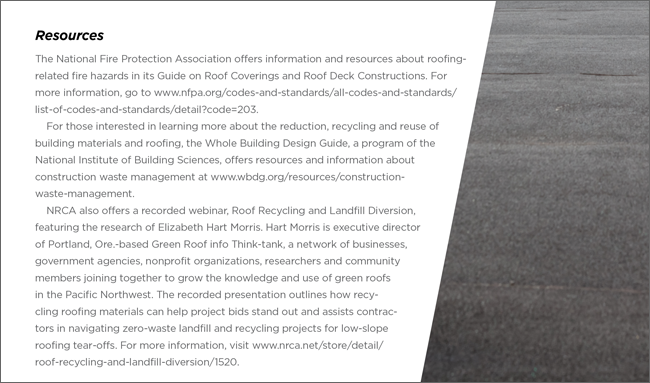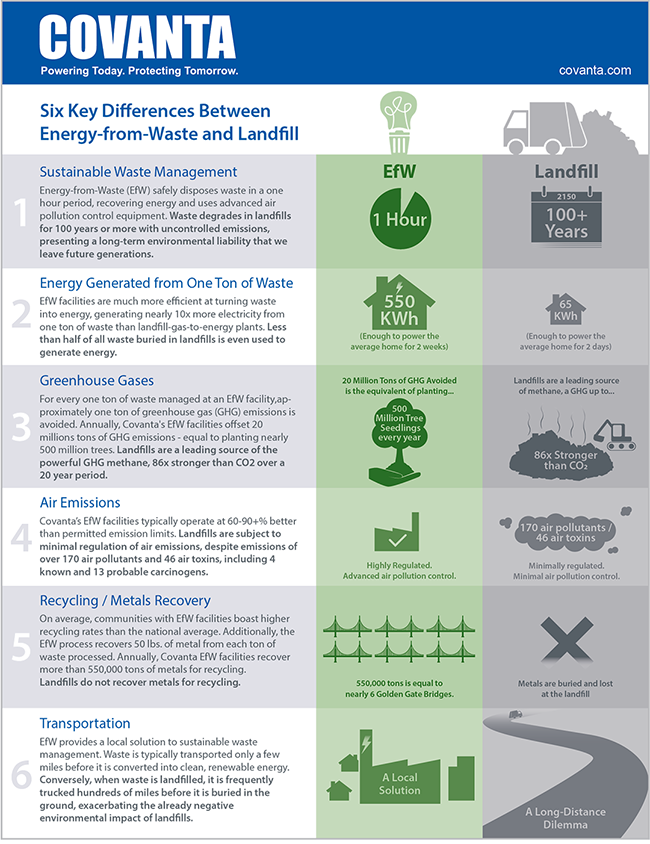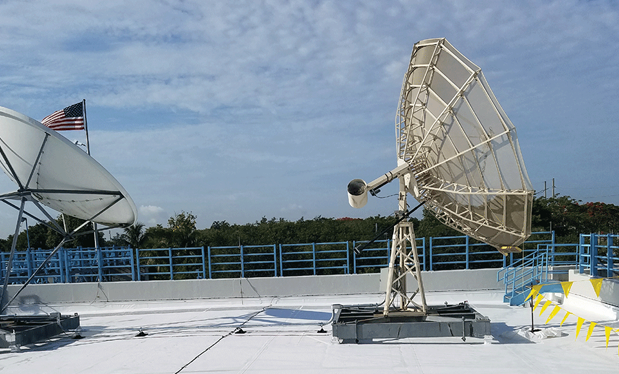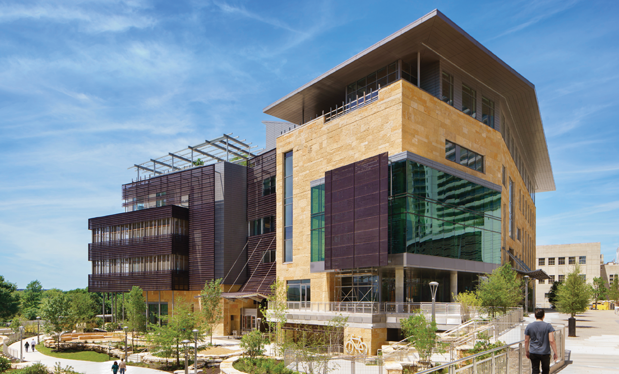For decades, polymer-modified bitumen has been a common roofing material used throughout North America. Installed using a torch, asphalt or cold adhesive, polymer-modified bitumen has been used for years by roofing contractors to build durable, weather-resistant low-slope roof systems.
As the material turns 50 years old, I'll review the product's history and preview what's ahead.
Background
Following the long use of built-up roofing (BUR) worldwide, polymer-modified bitumen membranes were created as a soft polymer-asphalt mix identified as atactic polypropylene (APP) by Romolo Gorgati in Italy in 1967. By 1969, polymer-modified bitumen membranes were available in Germany, soon followed by most of Europe. After the oil embargo in 1973, skyrocketing petroleum prices drove the development of polymer-modified bitumen membranes in the U.S. However, these membranes did not come into prominence as a roofing product in the U.S. until the 1980s.
In polymer-modified bitumen, two primary modifiers are used: APP or SBS (styrene butadiene styrene). The basic difference between APP and SBS is APP-modified bitumen is modified with plastic and SBS-modified bitumen is modified with a form of synthetic rubber.
Bitumen displays a thermoplastic quality when softened by heat. Polymer-modified bitumen roof systems include factory-fabricated layers of asphalt that are modified using either rubber (SBS) or plastic (APP) ingredients for increased flexibility combined with a reinforcement for added strength and stability. Bitumen (or asphalt) is a sticky, black and viscous liquid or semisolid form of petroleum. It is found in natural deposits or may be a refined product and is used for roofing and road surfacing.
A variety of reinforcements are used in polymer-modified bitumen, including fiberglass and polyester mats and scrims. Scrim is a reinforcing fabric made from continuous filament yarn in an open-mesh construction.
Polymer-modified bitumen membranes typically are installed as a two- or three-ply (multi-ply) system. The type of modifier used may determine the method of membrane installation—mopped down using hot asphalt or heat-welded to melt the asphalt so it flows onto a substrate. Seams are sealed by the same technique. The membrane system may be held in place on a roof by either adhering or mechanically attaching the base sheet.
Advantages
Polymer-modified bitumen roof systems preserve most of the advantages of conventional built-up roof membranes, including puncture-resistance and general toughness. According to the Manual of Low-Slope Roof Systems, Fourth Edition, the many advantages of polymer-modified bitumen roof systems add up to a unique versatility that can be considered for a wide range of building uses in reroofing and new construction projects.
Polymer-modified bitumen roof and waterproofing systems are quickly installed, easy to maintain and available with a variety of reflective coatings, according to Whole Building Design Guide's Roofing Systems. Conventional polymer-modified bitumen roof systems typically are hot-mopped similar to traditional BUR systems but also may be applied with a torch. With either installation, the following should be considered:
- Hot mopping generally is safer and faster than torching.
- If hot asphalt is required for other roofing operations such as adhering insulation or a base sheet, it is likely more economical to hot mop the cap sheet, as well.
- Heat welding (also referred to as torch down) can evaporate surface moisture from the bonding area.
- Heat welding preheats and softens material, offering advantages in cold weather.
There are a few key differences among the modifiers used. APP polymers have elevated softening points and are unsuitable for adhering with hot-mopped asphalt. They require heat fusion via torch to adhere the polymer-modified bitumen sheet to its substrate and seal field seams and form flashings.
Similar to APP, SBS was introduced in the 1960s and is a plasticizer that produces greater elasticity and low-temperature flexibility. SBS molecules form a bond with the asphalt and perform similarly to a solid while exhibiting elastic behavior. The unique polymer-dispersing property of SBS provides a distinct advantage over APP as a bitumen modifier. Additionally, SBS polymer-modified bitumen membranes can be field-adhered with conventional hot-mopped asphalt because the melting point is much lower than APP.
A distinct advantage of polymer-modified bitumen includes its manufacture with a collection of raw materials. It is a membrane in a roll, so there are no hot kettle or skilled labor issues. When put together, asphalt and felt become a membrane that can be made in a manufacturing plant. Although polymer-modified bitumen is prominent in new roof system applications and reroofing projects, polymer-modified bitumen products are not common on large, lightweight structures because of their weight. In practical application, roof systems for buildings such as warehouses and airplane hangars are dominated by single-ply options.
What's new(er)?
Originally, polymer-modified bitumen products were heat-fused and melted together with a propane torch or mopped in place. Backed by research and testing for alternative methods, newer polymer-modified bitumen technology offers attachment methods that involve adhesives or peel-and-stick options. Two driving forces behind these innovations are fire prevention/mitigation and using cold-applied systems as adhesive. Flameless adhesive options are desirable for some projects to mitigate risk and insurance concerns.
Advancements in membrane reinforcement employ glass and polyester. The current marketplace reflects further innovations in polyester fibers and mats with some developed from recycled polyester materials. As a result of a perceived increase in performance, composite membranes made of glass and polyester have evolved, driving others to follow.
Although polymer-modified bitumen products may not be directly affected by politics or economics, environmental concerns may receive swift, immediate attention. State and local governments primarily are interested in limiting the use of hazardous chemicals. Beyond petroleum, polymer-modified bitumen doesn't contain hazardous components.
Driven by the solar reflectance index and its growing prominence within LEED,® reflective cap sheets are a popular choice with installed polymer-modified bitumen membranes. LEED recommends using highly reflective roof surfacing to receive the benefit of reducing heat gain in densely populated urban centers (known as the urban heat island effect) more than for the benefit of individual building economics.

|
Many current "green" building initiatives have influenced roofing materials. Beyond LEED, programs such as the Living Building Challenge through the International Living Future Institute have risen in importance for those that manufacture and install roofing products. Other important criteria include life cycle analysis, a tool measuring sustainability as interpreted by the length of time an entity can be expected to serve its intended use.
As a voluntary declaration of the life cycle environmental impact, an environmental product declaration (EPD) is an independently verified and registered document that communicates transparent and comparable information about the life cycle environmental impact of products.
It's important to note having an EPD for a product does not imply the declared product is environmentally superior to alternatives.
True sustainability
A polymer-modified bitumen roof system provides a building owner with longevity. As an example, government buildings are mostly constructed with stone for longevity, and the same goes for polymer-modified bitumen in roofing. Longevity and sustainability have become critical to architects, designers and engineers.

Covanta, Morristown, N.J., specializes in energy-from-waste programs, including asphalt roofing. |
Although polymer-modified bitumen and adhered BUR systems haven't historically been a focus for recycled materials, many of these systems can effectively be restored in place. Constructed correctly, polymer-modified bitumen membranes are sustainable in terms of service life and durability.
Recycling and waste
More than 8 million tons of roofing tear-off waste are dumped into U.S. landfills each year, but more than 90 percent could be recycled, according to Elizabeth Hart Morris, executive director of Green Roof info Think-tank, Portland, Ore. Some cities are enacting mandatory recycling of construction and demolition waste (including roof system tear-offs), and landfill fees continue to rise. In response, building owners increasingly are demanding zero-waste materials for maintenance items such as roof systems.
As an example, Morristown, N.J.-based Covanta specializes in energy-from-waste programs that incinerate waste, including asphalt roofing. According to Hart Morris, most building owners don't know or even think about the amount of energy that can be converted from waste.
"One ton of trash can heat a home for two weeks," she shares.
Although roofing materials aren't a standard service for Covanta, the company currently works closely with municipalities for overall landfill waste.
Hart Morris cites nonproprietary studies of roof membranes conducted by the late Carl Cash, a former building pathologist with Simpson, Gumpertz & Heger Inc., Waltham, Mass., as some of the most comprehensive research conducted on low-slope roof system durability.
"The Cash studies show the longevity and sustainability of asphalt-based roof systems," she says. "Most asphalt systems can be restored at the end of their service lives."
Some corporate entities with many roof systems to manage have zero-waste goals, but most don't know their roof systems can be recycled and restored.
"Everyone from large retailers, such as hotels, universities and hospitals, are becoming more aware of this," she notes. "Fortunately, roofing contractors now are more aware of the possibilities and are educating their building owner clients."
Outstanding in the long run
When considering new roof system or reroofing options, make sure to give polymer-modified bitumen systems a serious look. After serving the industry well for 50 years, polymer-modified bitumen membranes might not only be the best long-term roof solution, but they also could be an environmentally sound decision, too.



